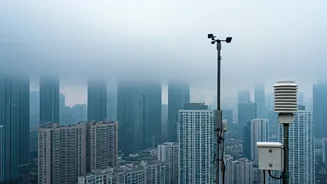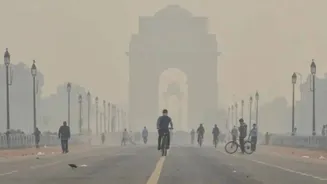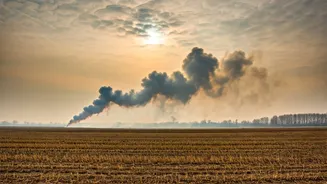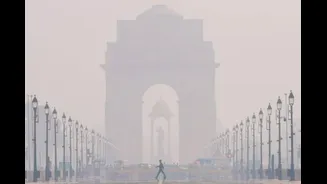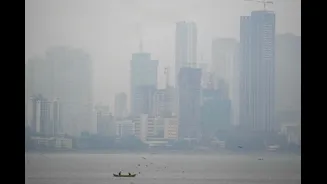AQI's Alarming Rise
The air quality in Delhi has been severely impacted, with the Air Quality Index (AQI) surging to worrying levels in many significant locations. According
to reports, the AQI has surpassed 400 in numerous key areas, indicating a critical situation. This drastic upsurge is a cause for concern among the citizens, prompting health advisories and calls for increased vigilance. The AQI measures the concentration of various pollutants in the air. A reading above 400 is classified as severe, suggesting the air is extremely unhealthy and poses substantial health risks for anyone exposed to it. This situation emphasizes the immediate need for awareness and protective measures.
Winter Fog's Role
The onset of winter has brought with it a thick blanket of fog, which is a major factor contributing to the worsening air quality in Delhi. The cold, dense air of winter traps pollutants close to the ground, inhibiting their dispersal. This phenomenon, known as temperature inversion, creates a lid over the city, preventing pollutants from rising and dispersing. This is what leads to a build-up of harmful particles, like particulate matter, near the ground. The fog essentially acts like a container, concentrating the pollutants and making them much more dangerous for people who are exposed. It is the combination of cold weather and lack of wind, creating an environment that amplifies the pollution's intensity.
Health Implications Explained
The significant rise in the AQI, particularly above the 400 mark, brings significant health implications for Delhi's residents. Exposure to air with such a high concentration of pollutants can trigger or worsen respiratory illnesses such as asthma, bronchitis, and other breathing difficulties. Children, the elderly, and those with pre-existing health conditions are especially vulnerable. Beyond respiratory problems, poor air quality can also affect cardiovascular health, increasing the risk of heart attacks and strokes. Prolonged exposure can lead to long-term health issues. Authorities often issue health advisories during such periods, advising people to limit outdoor activities, especially during peak pollution hours, and to wear masks if they have to go outside.
Mitigation and Awareness
Addressing the problem of high AQI requires a multifaceted approach, involving both short-term and long-term strategies. In the short term, measures like restricting construction activities, halting the burning of waste, and controlling vehicular emissions can offer some relief. The government might issue guidelines for schools and workplaces, such as suggesting online classes and work-from-home options to minimize people's exposure. Long-term solutions involve tackling the root causes of pollution. This requires a shift towards cleaner fuels, promoting sustainable transportation methods, and implementing stricter regulations on industrial emissions. Increased public awareness campaigns play a crucial role, educating people on the risks of pollution and encouraging them to adopt practices that reduce their contribution to it. Only through joint efforts can the city gradually combat the challenges posed by air pollution.
